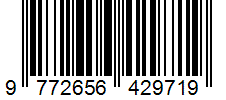Perbandingan return saham dengan indikator bollinger band dan stochastic oscillator pada perusahaan sub sektor telekomunikasi, bank dan batu bara
DOI:
https://doi.org/10.26905/j.bijak.v5i1.7495Keywords:
Capital Market, Technical Analysis, Bollinger Band, Stochastic OscillatorAbstract
This study aims to compare the level of return and make decisions at the right time to sell and buy shares in the Telecommunications, Banks and Coal Sub-Sector Companies registered in the LQ45 index. Technical indicators used are Bollinger Band and Stochastic. The data used are secondary data, with samples of shares of Telecommunications, Banks and Coal Sub-Sector Companies registered in the LQ45 index period September 2020 - September 2021. Sampling is carried out with purposive sampling technique. Data retrieval Using TradingView Software on the TradingView.com website. Based on the results of research from Bollinger Band and Stochastic indicators. What produces greater profits is to use the Stochastic Oscillator. With moments, the purchase signal will appear when the K% line cuts the D% line from the top up in the Oversold zone which is confirmed by cutting the stochastic line to the vertical scale of 20, this situation is called Golden Cross (buy moment) on the grounds that the price will soon be ride. Meanwhile, the selling signal will appear when the K% line cuts the D% line from top to bottom in the overbought zone which is confirmed by cutting the stochastic line to the vertical scale 80, this situation is called Death Cross (sell moment) on the grounds that the price will soon come downDownloads
References
Agus Harjito dan Martono, Manajemen Keuangan. Edisi Kedua, Cetakan Pertama, Penerbit EKONISIA, Yogyakarta, 2011.
Anoraga, Pandji dan Pakarti, Piji. 2001. Pengantar Pasar Modal. Jakarta: Rineka Cipta.
Darmadji & Fakhurddin. (2006). Pasar modal di Indonesia Pendekatan Tanya Jawab. Jakarta: Salemba Empat.
David, Fred R, 2011. Strategic Management, Buku 1. Edisi 12 Jakarta.
Fahmi, Irham. 2013. Analisis Laporan Keuangan. Bandung: Alfabeta.
Frankandinata, & Cahyadi, Y. (2014). Analisis Keakuratan Indikator Bollinger Bands Terhadap Pergerakan Harga Saham: Studi kasus pada saham PT. Astra Agro Lestari Tbk. Binus Business Review, 5(1), 112–122. doi: 10.21512/bbr.v5i1.1201.
Hartono, Jogiyanto., 2010. Teori Portofolio dan Analisis Investasi. Yogyakarta: BPFE.
Hendarto, K. (2005). Belajar Trading: Pahami Trading sebelum anda mulai. Penerbit Andi.
Lipsey, Ragan, Courant. 1997. Market, Pricing and Efficiency. Macroeconomics. Ninth canadian edition. The addision-wesley educational publishers.
Mafula, L. C. (2016). Analisis Teknikal Sebagai Dasar Pengambilan Keputusan Dalam Trading Saham Pada Bursa Efek Indonesia. Jurnal Ilmiah Mahasiswa FEB Universitas Brawijaya, 3(2), 1-11
Octavian, G., Ivonne, S., & Joubert, B. Uji Akurasi Support Resistance Berbasis Data Candlestick Pada Industri Pertambangan yang Terdaftar di Indeks LQ45. Jurnal Manajemen Bisnis dan Inovasi, 6(1), 1-10
Ong, E. (2016). Technical analysis for mega profit. PT. Gramedia Pustaka Utama.
Prabhata, A. (2012). Efektifitas Penggunaan Analisis Teknikal Stochastic Oscillator dan Moving Average Convergence-Divergence (MACD) Pada Perdagangan Saham-Saham Jakarta Islamic Index (JII) di Bursa Efek Indonesia. Sinergi, 13(1), 1–14. doi: 10.20885/sinergi. vol13.iss1.art1.
Prasetyo, P., Nurlaely, & Subagyo, H. (2019). Analisis Komparatif Penggunaan Metode Stochastic, Moving Average dan MACD Dalam Mendapatkan Keuntungan Optimal dan Syar’i (Study pada Jakarta Islamic Index 2016-2018). JIMEK: Jurnal Ilmiah Mahasiswa Ekonomi, 2(1), 52–68. doi: 10.30737/jimek.v2i1.414.
Roy, G., & Hermuningsih, S. (2016). Analisis Teknikal Saham Menggunakan Indikator Bollinger Bands dan Relative Strength Index Untuk Pengambilan Keputusan Investasi. Jurnal Manajemen, 6(1), 63-68
Sumanto, Edi, 2006,“Analisis Pengaruh Perkembangan Pasar Modal Terhadap Perekonomian Indonesiaâ€,Skripsi S1 Fakultas Manajemen Institut Pertanian Bogor, Bogor.
Suryawan, I., & Bagiarta, I. (2017). Expert Advisor dengan Strategi Moving Average, RSI, dan Bollinger Band. Jurnal Sistem dan Informatika, 11(2), 1-9
Susilo D., Bambang. 2009. Pasar Modal Mekanisme Perdagangan Saham: Analisis Sekuritas dan Strategi di BEI.
Sutha,I.P.G.A. (2000). Menuju Pasar Modal Modern. Jakarta: Yayasan SAD Satria Bhakti.
Syamsir, Hendra., 2004. Solusi Investasi di Bursa Saham Indonesia Pendekatan Analisa Teknikal Melalui Studi Kasus Riil Dengan Dilengkapi Formulasi Metastock. Jakarta: PT Elex Media Komputindo.
Tandelilin, Eduardus 2010, Portofolio dan Investasi Teori dan Aplikasi, edisi 1, Kanisius, Yogyakarta.
Downloads
Published
How to Cite
Issue
Section
License
Authors who publish in JURNAL BISNIS DAN PERPAJAKAN (BIJAK) agree to the following terms:
- Authors retain copyright and grant the journal right of first publication with the work simultaneously licensed under Creative Commons Attribution License that allows others to share the work with an acknowledgment of the work's authorship and initial publication in this journal.
- Authors are able to enter into separate, additional contractual arrangements for the non-exclusive distribution of the journal's published version of the work (e.g., post it to an institutional repository or publish it in a book), with an acknowledgment of its initial publication in this journal.
- Authors are permitted and encouraged to post their work online (e.g., in institutional repositories or on their website) prior to and during the submission process, as it can lead to productive exchanges, as well as earlier and greater citation of published work (See The Effect of Open Access)
JURNAL BISNIS DAN PERPAJAKAN (BIJAK) - D3 Akuntansi, Fakultas Ekonomi dan Bisnis, Universitas Merdeka Malang Published by University of Merdeka Malang, is licensed under a Creative Commons Attribution-ShareAlike 4.0 International License.






